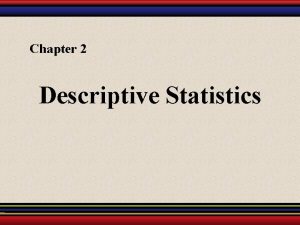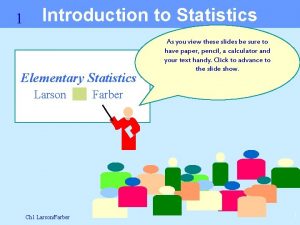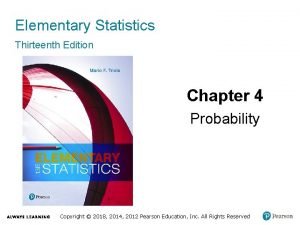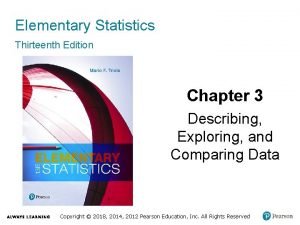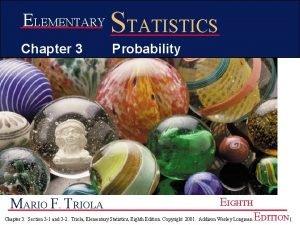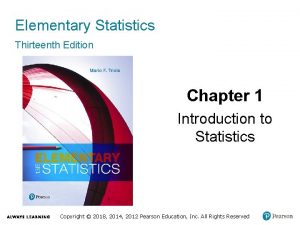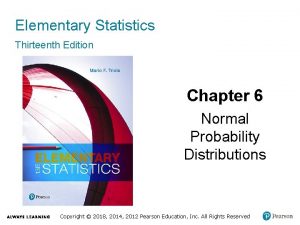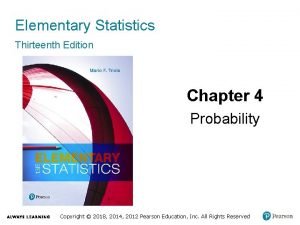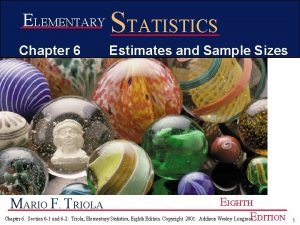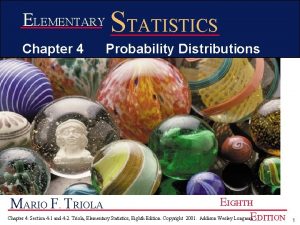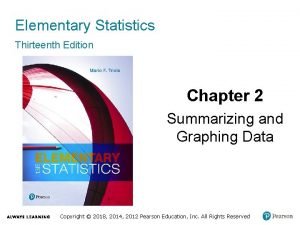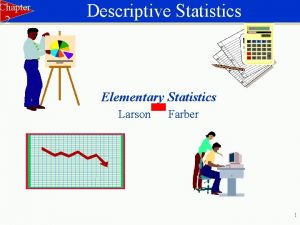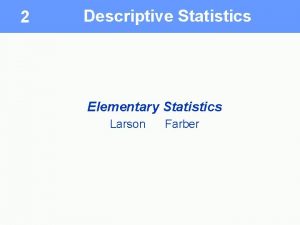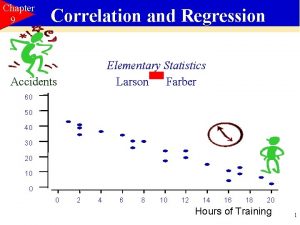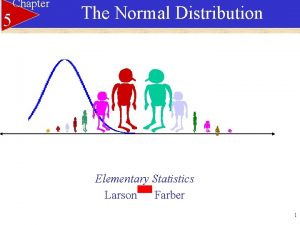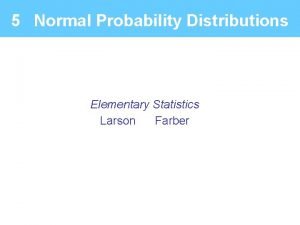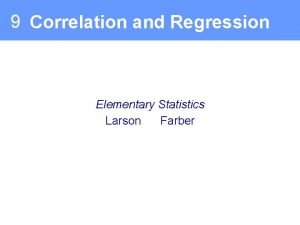Chapter 1 Introduction to Statistics Elementary Statistics Larson











- Slides: 11

Chapter 1 Introduction to Statistics Elementary Statistics Larson Farber Ch 1 Larson/Farber 1

What is Statistics? n Statistics is the science of collecting, organizing, analyzing, and interpreting data in order to make decisions. Ch 1 Larson/Farber 2

Important Terms • Population The collection of all responses, measurements, or counts that are of interest. • Sample A portion or subset of the population. x x x x xx x x x x x xxx x x xx x x xx x x x Ch 1 Larson/Farber 3

Important Terms • Parameter: A number that describes a population characteristic. Average of all people in the United States • Statistic: A number that describes a sample characteristic. Average of people from a sample of three states. Ch 1 Larson/Farber 4

Branches of Statistics n Descriptive Statistics Involves organizing, summarizing, and displaying data. n Inferential Statistics Involves using sample data to draw conclusions about a population. Ch 1 Larson/Farber 5

Random Samples Simple Random Sample: Each member of the population has an equal chance of being selected. x xxxxx x x xx xx xx x x x x xx x xxxx x x x x x x xx xx xx x • Assign a number to each member of the population. • Random numbers can be generated by a random number table, software program or a calculator. • Members of the population that correspond to these numbers become members of the sample. 6

Random Samples Systematic Sample: Choose a starting value at random. Then choose every kth member of the population. xxxxxxxxxxxxxxxxxxxxxxxxxxxxxxxxxxx Convenience Sample: Choose readily available members of the population for your sample. Ch 1 Larson/Farber 7

Random Samples Stratified Sample: Divide the population into groups (strata) and select a random sample from each group. Cluster Sample: Divide the population into individual units or groups and randomly select one or more units. Ch 1 Larson/Farber 8

Levels of Measurement 1. Nominal: Categories, names, labels, or qualities. Cannot perform mathematical operations on this data. Ex: type of car you drive, your major 2. Ordinal: Data can be arranged in order. You can say one data entry is greater than another. 1 st place Ex: TV ratings, condition of patient in hospital. Ch 1 Larson/Farber 9

Levels of Measurement Data can be ordered and 3. Interval: differences between 2 entries can be calculated. There is no inherent zero (a zero that means “none”. ) Ex: Temperature, year of birth 4. Ratio: There is an inherent zero. Data can be ordered, differences can be found, and a ratio can be formed so you can say one data value is a multiple of another. Ex. Height, weight, age Ch 1 Larson/Farber 10

Data Collection • Experiment: Apply a treatment to a part of the group. • Simulation: Use a mathematical model (often with a computer) to reproduce condition. • Census: A count or measure of the entire population • Sampling: A count or measure of part of the population. Ch 1 Larson/Farber 11
 Elementary statistics chapter 2
Elementary statistics chapter 2 Introduction to elementary statistics
Introduction to elementary statistics Introduction to statistics what is statistics
Introduction to statistics what is statistics Elementary statistics chapter 4
Elementary statistics chapter 4 Elementary statistics chapter 3
Elementary statistics chapter 3 Elementary statistics chapter 3 answers
Elementary statistics chapter 3 answers Elementary statistics 13th edition chapter 1
Elementary statistics 13th edition chapter 1 Elementary statistics chapter 6
Elementary statistics chapter 6 Elementary statistics chapter 4
Elementary statistics chapter 4 Margin error
Margin error Elementary statistics chapter 4
Elementary statistics chapter 4 Elementary statistics chapter 2
Elementary statistics chapter 2
